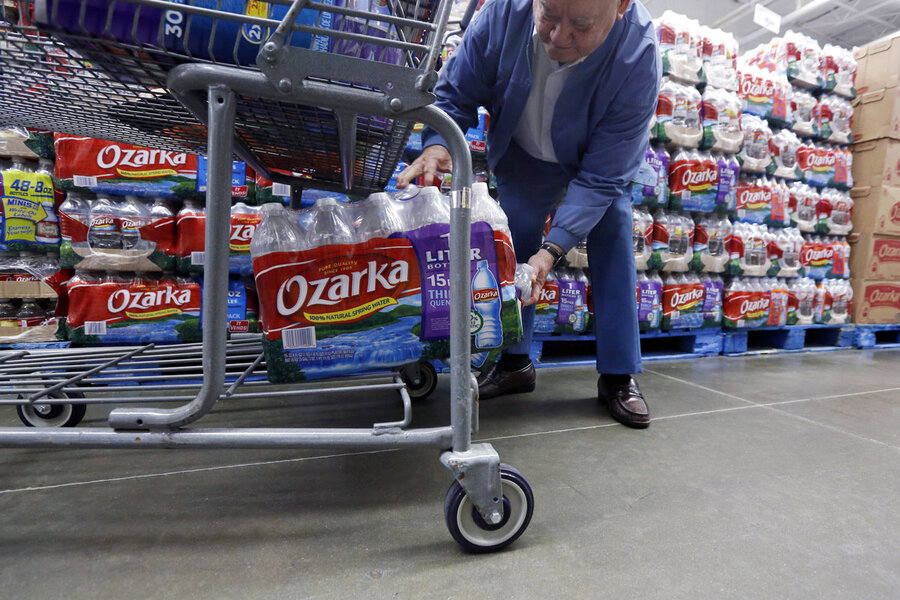Americans now drink more bottled water than soda: What has changed?
Loading...
Is water America’s new favorite beverage?
Bottled water surpassed carbonated soft drinks to be the largest beverage category by volume, according to the latest report from market research and consulting firm Beverage Marketing Corp. While the new data confirms a decades-long shift in consumption habits from soda to water, largely driven by health concerns, some argue it also suggests a need to improve water infrastructure in the United States.
US bottled water sales grew from 11.8 billion gallons in 2015 to 12.8 billion gallons in 2016, BMC said. While annual per capita consumption of bottled water reached 39.3 gallons, carbonated soft drinks slipped to 38.5 gallons. That's a dramatic drop from the late 1990s and early 2000s, when the average American drank more than 50 gallons of soft drinks per year.
For Julie Ralston Aoki, director of Healthy Eating and Active Living at the Public Health Law Center in St. Paul, Minn., the trend is driven by health-conscious consumers.
“People want to make a healthier choice,” she tells The Christian Science Monitor in a phone interview. “I do also think that the beverage industry has been making an effort to diversify and offer a variety of products that appeal to customers, so that's helped too.”
Bottled water was a $16 billion industry in 2016, almost triple what it was in 2000, according to BMC. Within that market, domestic sparkling water sales saw the most growth between 2013 and 2015, a report from the International Bottled Water Association shows.
This consumption trend reflects a shift in the public’s acceptance of bottled water, said BMC's chief executive officer Michael Bellas.
“Where once it would have been unimaginable to see Americans walking down the street carrying plastic bottles of water, or driving around with them in their cars' cup holders, now that's the norm," he said in a statement.
Bottled water may be the new normal, but it still costs dramatically more than drinking tap water. An industry report in 2013 said consumers were spending 300 times the cost of tap water to drink bottled water. But that cost was artificially deflated by including gallon and multi-gallon jugs, even though two-thirds of bottled water is sold in single-serve bottles, where the cost of a gallon of bottled water could be almost 2,000 times that of a gallon of tap water.
Why spend so much more to drink your water out of a bottle?
Consumers are concerned about the safety of the tap water, says Ms. Aoki. After the Flint, Mich., water contamination and treatment crisis, only 1 in 3 Americans were willing to drink water straight from the tap, as the Monitor reported in March 2016.
"What that says to me is that we need better infrastructure to support tap water," says Aoki. "Water is definitely the healthiest choice and most economical, as long as you live in those places where you can get safe tap water."
This report includes material from Reuters.






